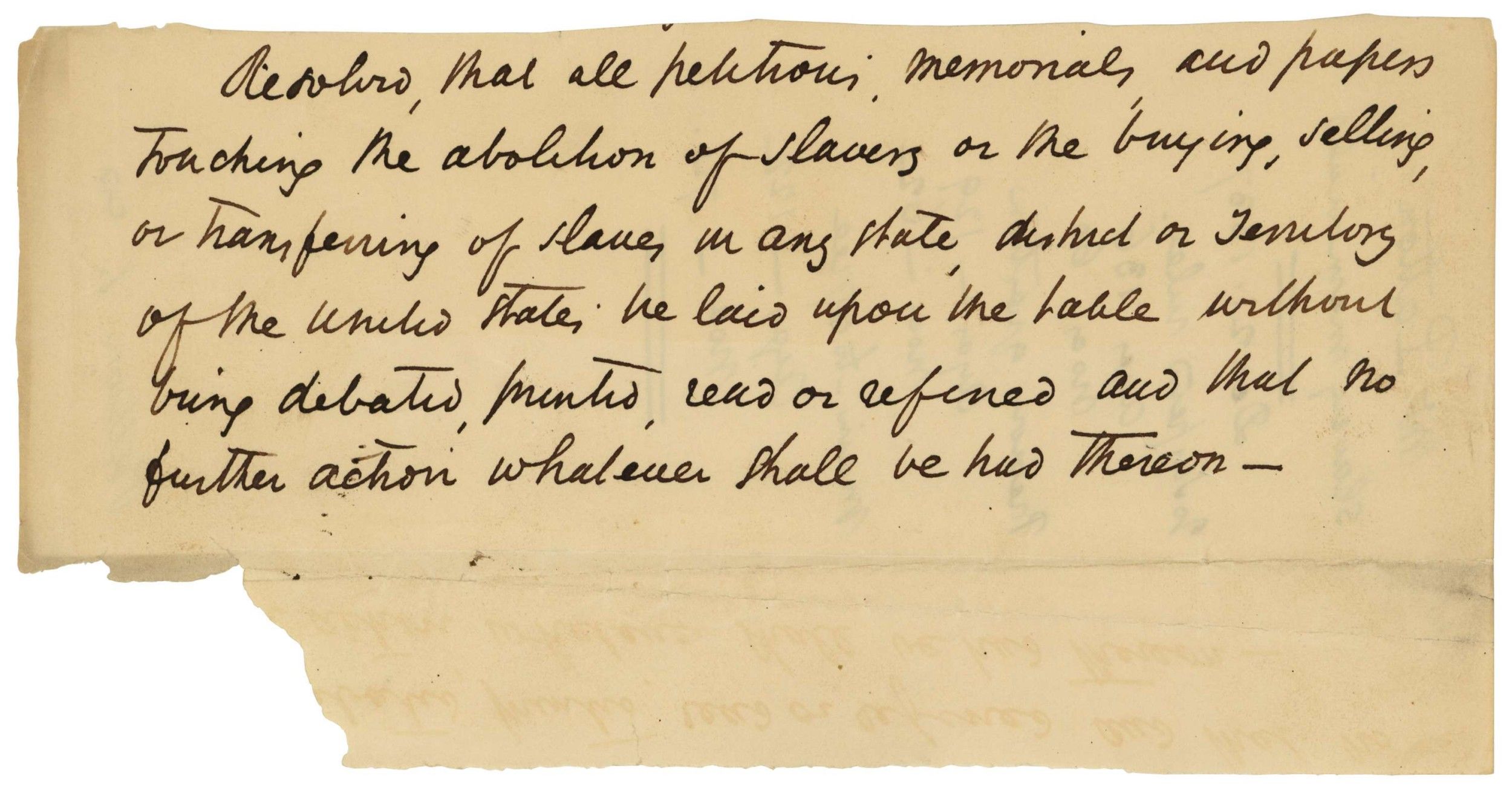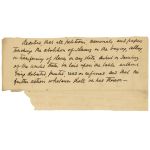The "Gag Rule" Resolution
12/21/1837
Add to Favorites:
Add all page(s) of this document to activity:

Add only page 1 to activity:
Add only page 2 to activity:
Slavery was such a contentious issue in the 1830s that Congress simply didn't talk about it. The "gag rule" passed in the House of Representatives in 1836. It automatically tabled (dismissed) all petitions regarding slavery.
Under the gag rule, anti-slavery petitions were not read on the floor of the House, referred to a committee, nor printed. No member needed to make a motion for the rule to take effect. The rule was renewed in each Congress between 1837 and 1839. In 1840 the House passed an even stricter rule, which refused to accept all anti-slavery petitions.
The House rescinded it in 1844 when Representative John Quincy Adams successfully argued that—whatever one’s view on slavery—stifling the First Amendment right to petition was unconstitutional.
Under the gag rule, anti-slavery petitions were not read on the floor of the House, referred to a committee, nor printed. No member needed to make a motion for the rule to take effect. The rule was renewed in each Congress between 1837 and 1839. In 1840 the House passed an even stricter rule, which refused to accept all anti-slavery petitions.
The House rescinded it in 1844 when Representative John Quincy Adams successfully argued that—whatever one’s view on slavery—stifling the First Amendment right to petition was unconstitutional.
Transcript
Resolved, that all petitions, memorials, and papers touching the abolition of slavery or the buying, selling, or transferring of slaves in any state, district or Territory of the United States be laid upon the table without being debated, printed, read or referred and that no further action whatever shall be had thereon -This primary source comes from the Records of the U.S. House of Representative.
National Archives Identifier: 306601
Full Citation: Resolution that all Petitions, Memorials, and Papers Relating to Slavery be Laid Upon the Table Without Being Debated, Printed, Read or Referred (the 'Gag Rule' Resolution); 12/21/1837; Bills and Resolutions Originating in the House of Representatives, 25th Congress; (25AB3-1); Bills and Resolutions Originating in the House, 1789 - 1974; Records of the U.S. House of Representative, Record Group 233; National Archives Building, Washington, DC. [Online Version, https://www.docsteach.org/documents/document/gag-rule, April 24, 2024]Rights: Public Domain, Free of Known Copyright Restrictions. Learn more on our privacy and legal page.





